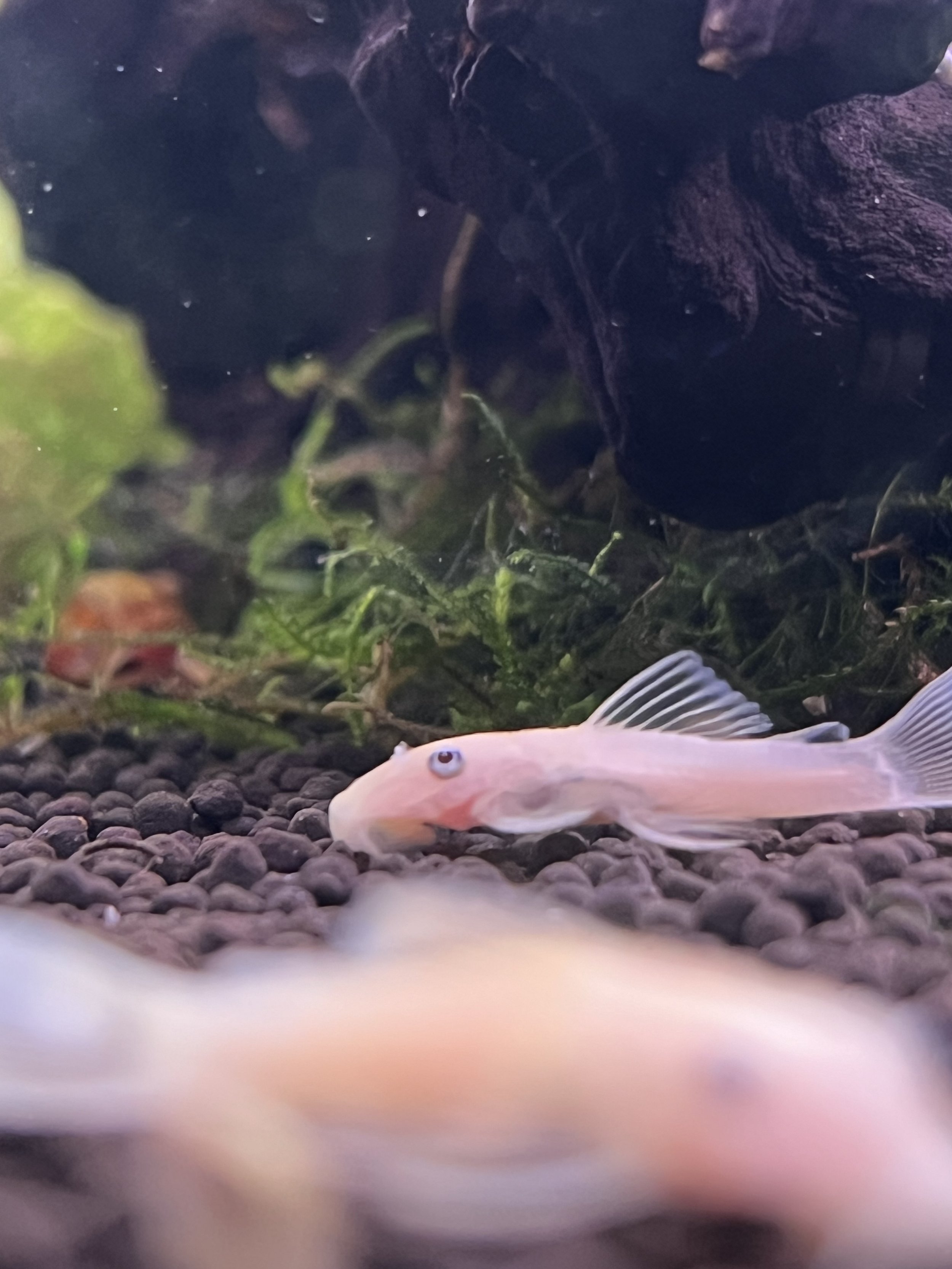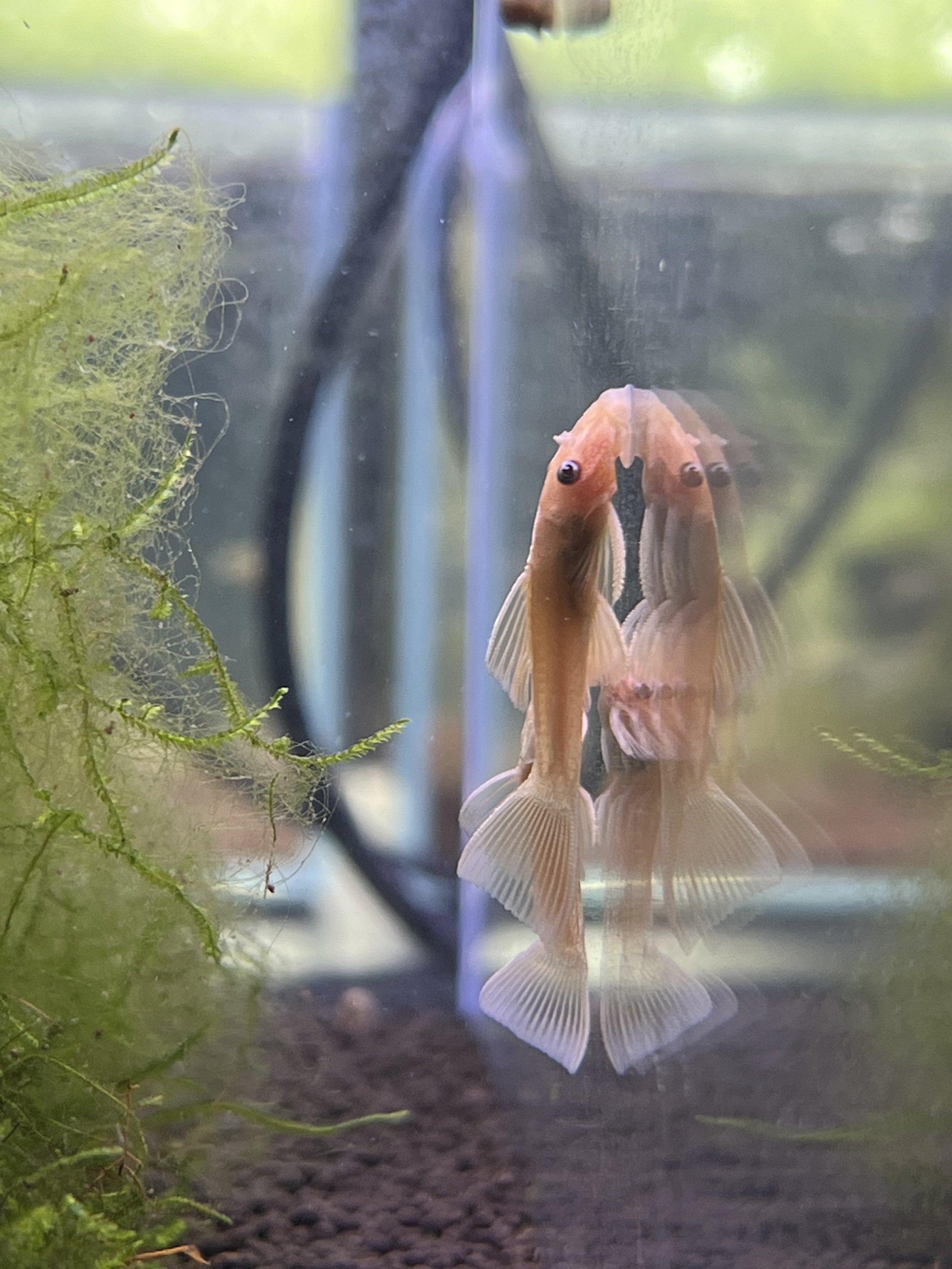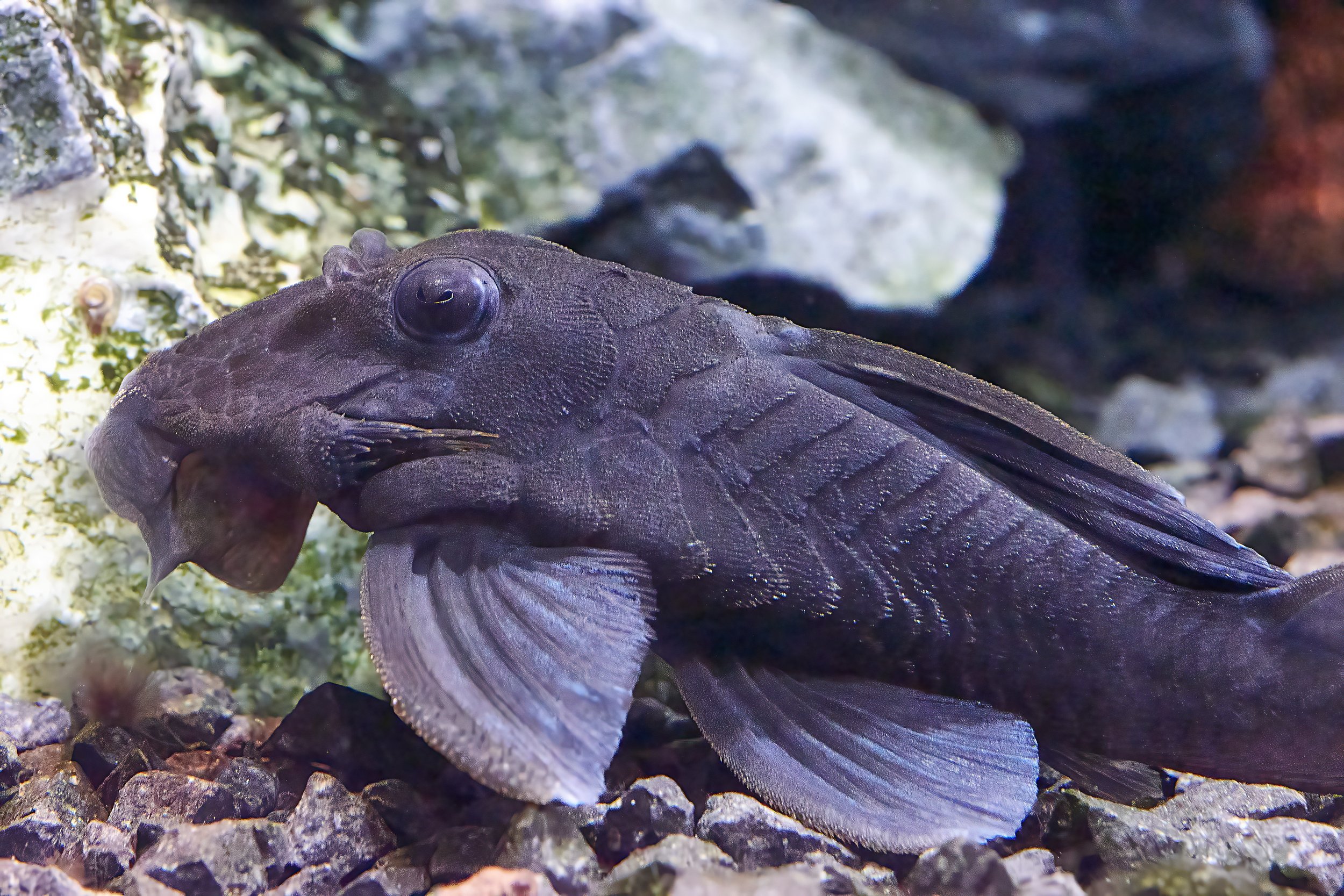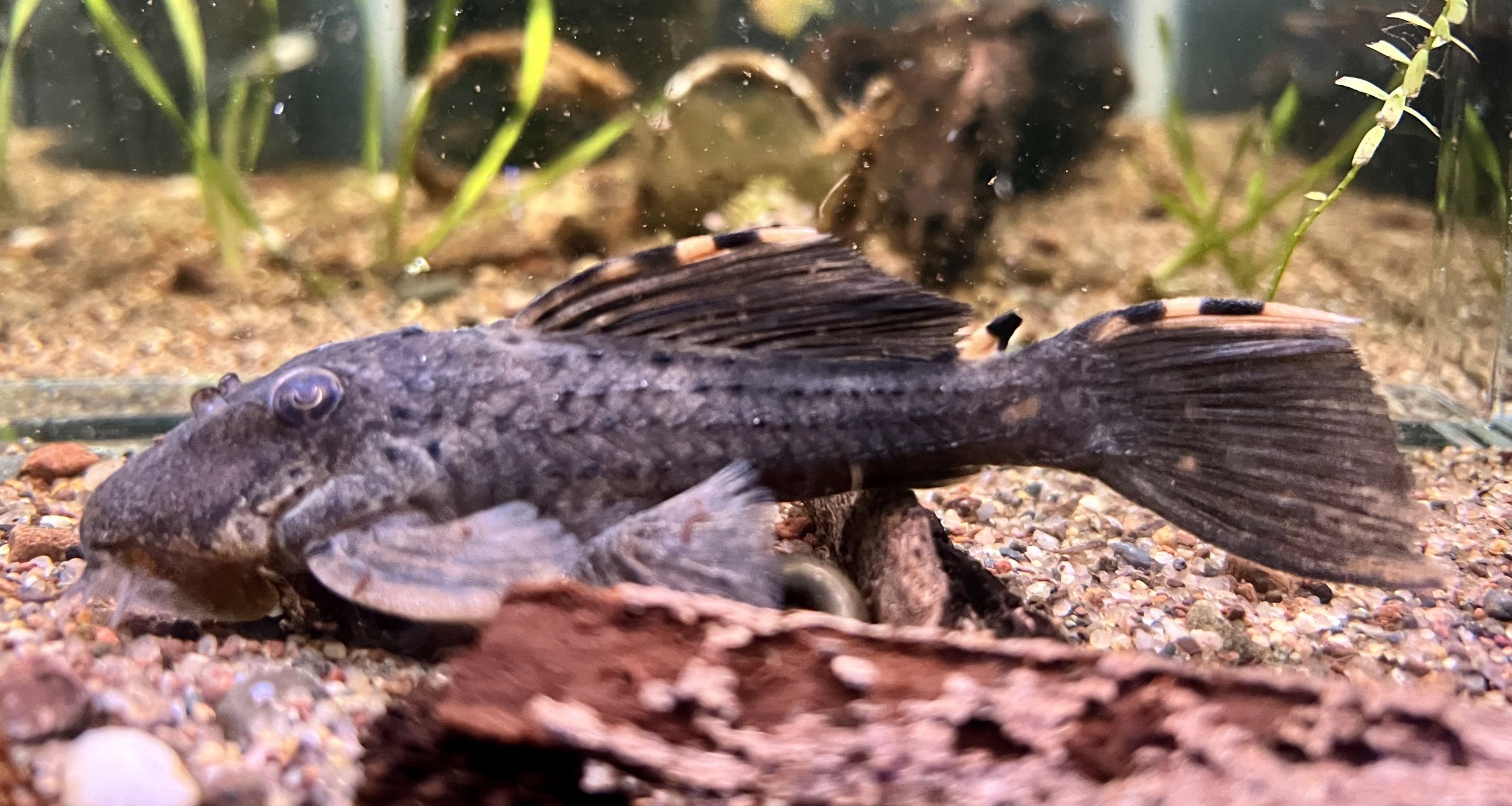 Image 1 of 2
Image 1 of 2

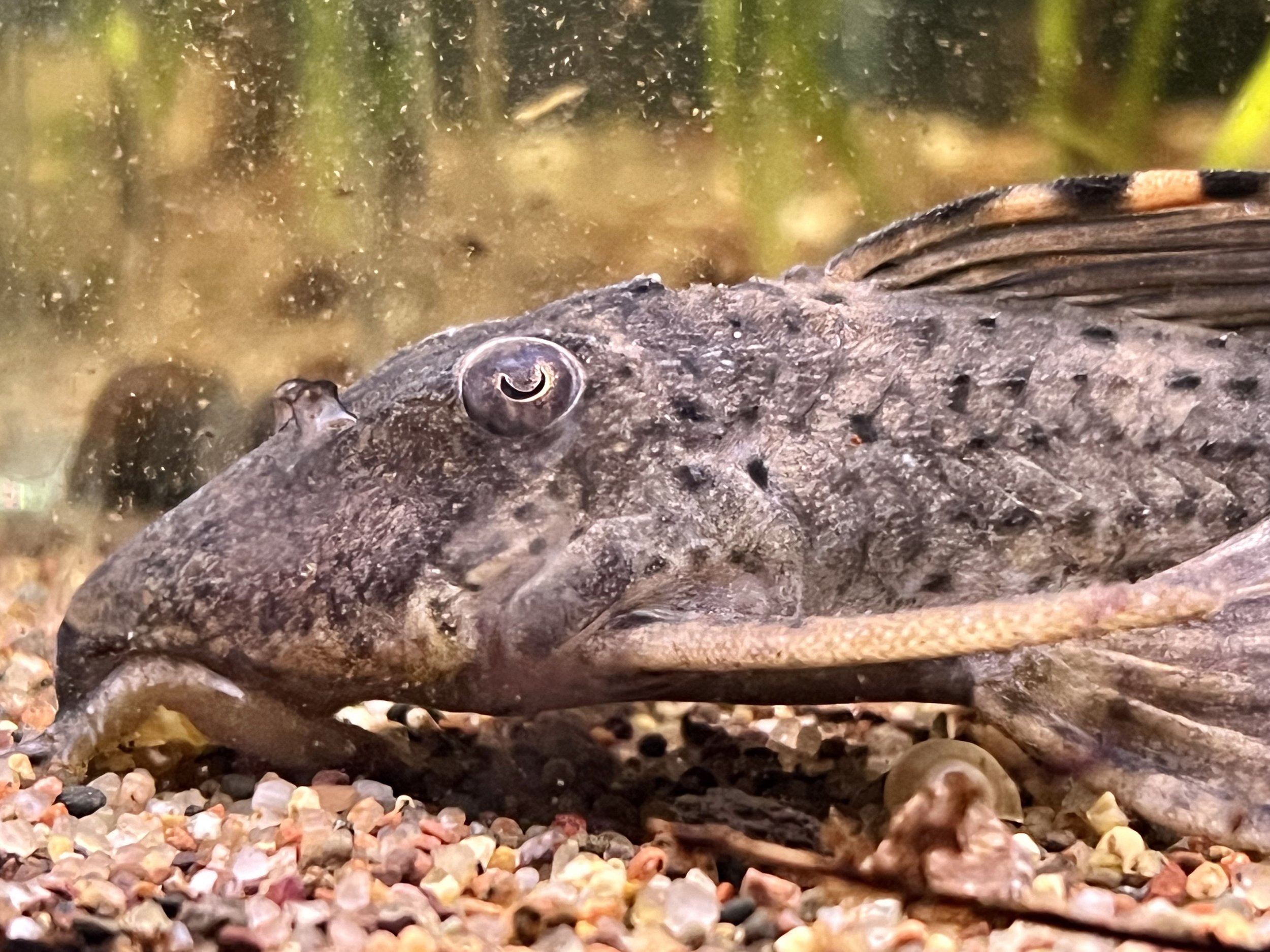 Image 2 of 2
Image 2 of 2



Three Beacon Plecostomus L
The L091 Three Beacon Plecostomus, scientifically known as Leporacanthicus triactis, is a stunning and highly sought-after pleco species in the aquarium hobby, admired for its striking black body and distinctive red-orange markings on its dorsal fin. Native to the fast-flowing rivers of Venezuela, particularly in the Orinoco River Basin, this species is a fantastic addition to larger freshwater aquariums where it can showcase its beauty and unique behavior.
Physically, the L091 Three Beacon Plecostomus stands out due to its sleek, jet-black body adorned with bright red-orange or yellow-orange patches on the dorsal fin. These three bands, or "beacons," are what give the fish its common name. The body shape is typical of plecos, with a streamlined form and a sucker mouth designed for clinging to rocks and grazing on algae in fast-flowing waters. Adult Three Beacon Plecos typically reach a size of about 10 to 12 inches (25 to 30 centimeters), making them more suitable for larger aquariums.
In the aquarium, the L091 Three Beacon Plecostomus thrives in environments that replicate its natural habitat. A tank with plenty of rocks, caves, driftwood, and hiding spots is essential, as this pleco enjoys seeking shelter and establishing territories. A soft substrate is recommended to prevent injury to their delicate barbels. While generally peaceful, this species can be territorial with other plecos, especially in confined spaces, so providing ample hiding places and space is important when housing multiple plecos or bottom dwellers.
Water parameters for the L091 Three Beacon Plecostomus should mimic the clean, well-oxygenated conditions of its native rivers. They prefer slightly acidic to neutral water with a pH range of 6.5 to 7.5 and temperatures between 75 to 82°F (24 to 28°C). Strong water flow is appreciated, as it simulates the fast-moving currents of their natural environment. Regular water changes and good filtration are crucial for maintaining the water quality that these fish require.
Feeding the L091 Three Beacon Plecostomus is relatively straightforward, as they are omnivorous but lean towards a more carnivorous diet compared to many other plecos. They will readily accept sinking carnivore pellets, algae wafers, and high-quality pleco-specific foods. Their diet should also be supplemented with live or frozen protein-rich foods such as bloodworms, brine shrimp, and chopped prawns. While they may nibble on algae, they are not efficient algae eaters and should be provided with a varied diet that includes meaty foods to ensure their health and vibrant coloration.
Breeding the L091 Three Beacon Plecostomus in captivity is rare but not impossible. Like many other pleco species, they are cave spawners, and providing suitable caves or crevices is essential for successful breeding. The male typically guards the eggs after spawning, fanning them to ensure proper oxygenation. The eggs hatch in about a week, and the fry can be fed on a diet of finely crushed sinking pellets and baby brine shrimp as they grow.
Overall, the L091 Three Beacon Plecostomus (*Leporacanthicus triactis*) is a visually stunning and unique addition to large freshwater aquariums. With proper care and attention to their specific needs, these plecos can thrive and become a showpiece in any aquarium setup. Their striking black-and-orange coloration, along with their territorial yet relatively peaceful nature, makes them a favorite among pleco enthusiasts.
The L091 Three Beacon Plecostomus, scientifically known as Leporacanthicus triactis, is a stunning and highly sought-after pleco species in the aquarium hobby, admired for its striking black body and distinctive red-orange markings on its dorsal fin. Native to the fast-flowing rivers of Venezuela, particularly in the Orinoco River Basin, this species is a fantastic addition to larger freshwater aquariums where it can showcase its beauty and unique behavior.
Physically, the L091 Three Beacon Plecostomus stands out due to its sleek, jet-black body adorned with bright red-orange or yellow-orange patches on the dorsal fin. These three bands, or "beacons," are what give the fish its common name. The body shape is typical of plecos, with a streamlined form and a sucker mouth designed for clinging to rocks and grazing on algae in fast-flowing waters. Adult Three Beacon Plecos typically reach a size of about 10 to 12 inches (25 to 30 centimeters), making them more suitable for larger aquariums.
In the aquarium, the L091 Three Beacon Plecostomus thrives in environments that replicate its natural habitat. A tank with plenty of rocks, caves, driftwood, and hiding spots is essential, as this pleco enjoys seeking shelter and establishing territories. A soft substrate is recommended to prevent injury to their delicate barbels. While generally peaceful, this species can be territorial with other plecos, especially in confined spaces, so providing ample hiding places and space is important when housing multiple plecos or bottom dwellers.
Water parameters for the L091 Three Beacon Plecostomus should mimic the clean, well-oxygenated conditions of its native rivers. They prefer slightly acidic to neutral water with a pH range of 6.5 to 7.5 and temperatures between 75 to 82°F (24 to 28°C). Strong water flow is appreciated, as it simulates the fast-moving currents of their natural environment. Regular water changes and good filtration are crucial for maintaining the water quality that these fish require.
Feeding the L091 Three Beacon Plecostomus is relatively straightforward, as they are omnivorous but lean towards a more carnivorous diet compared to many other plecos. They will readily accept sinking carnivore pellets, algae wafers, and high-quality pleco-specific foods. Their diet should also be supplemented with live or frozen protein-rich foods such as bloodworms, brine shrimp, and chopped prawns. While they may nibble on algae, they are not efficient algae eaters and should be provided with a varied diet that includes meaty foods to ensure their health and vibrant coloration.
Breeding the L091 Three Beacon Plecostomus in captivity is rare but not impossible. Like many other pleco species, they are cave spawners, and providing suitable caves or crevices is essential for successful breeding. The male typically guards the eggs after spawning, fanning them to ensure proper oxygenation. The eggs hatch in about a week, and the fry can be fed on a diet of finely crushed sinking pellets and baby brine shrimp as they grow.
Overall, the L091 Three Beacon Plecostomus (*Leporacanthicus triactis*) is a visually stunning and unique addition to large freshwater aquariums. With proper care and attention to their specific needs, these plecos can thrive and become a showpiece in any aquarium setup. Their striking black-and-orange coloration, along with their territorial yet relatively peaceful nature, makes them a favorite among pleco enthusiasts.
The L091 Three Beacon Plecostomus, scientifically known as Leporacanthicus triactis, is a stunning and highly sought-after pleco species in the aquarium hobby, admired for its striking black body and distinctive red-orange markings on its dorsal fin. Native to the fast-flowing rivers of Venezuela, particularly in the Orinoco River Basin, this species is a fantastic addition to larger freshwater aquariums where it can showcase its beauty and unique behavior.
Physically, the L091 Three Beacon Plecostomus stands out due to its sleek, jet-black body adorned with bright red-orange or yellow-orange patches on the dorsal fin. These three bands, or "beacons," are what give the fish its common name. The body shape is typical of plecos, with a streamlined form and a sucker mouth designed for clinging to rocks and grazing on algae in fast-flowing waters. Adult Three Beacon Plecos typically reach a size of about 10 to 12 inches (25 to 30 centimeters), making them more suitable for larger aquariums.
In the aquarium, the L091 Three Beacon Plecostomus thrives in environments that replicate its natural habitat. A tank with plenty of rocks, caves, driftwood, and hiding spots is essential, as this pleco enjoys seeking shelter and establishing territories. A soft substrate is recommended to prevent injury to their delicate barbels. While generally peaceful, this species can be territorial with other plecos, especially in confined spaces, so providing ample hiding places and space is important when housing multiple plecos or bottom dwellers.
Water parameters for the L091 Three Beacon Plecostomus should mimic the clean, well-oxygenated conditions of its native rivers. They prefer slightly acidic to neutral water with a pH range of 6.5 to 7.5 and temperatures between 75 to 82°F (24 to 28°C). Strong water flow is appreciated, as it simulates the fast-moving currents of their natural environment. Regular water changes and good filtration are crucial for maintaining the water quality that these fish require.
Feeding the L091 Three Beacon Plecostomus is relatively straightforward, as they are omnivorous but lean towards a more carnivorous diet compared to many other plecos. They will readily accept sinking carnivore pellets, algae wafers, and high-quality pleco-specific foods. Their diet should also be supplemented with live or frozen protein-rich foods such as bloodworms, brine shrimp, and chopped prawns. While they may nibble on algae, they are not efficient algae eaters and should be provided with a varied diet that includes meaty foods to ensure their health and vibrant coloration.
Breeding the L091 Three Beacon Plecostomus in captivity is rare but not impossible. Like many other pleco species, they are cave spawners, and providing suitable caves or crevices is essential for successful breeding. The male typically guards the eggs after spawning, fanning them to ensure proper oxygenation. The eggs hatch in about a week, and the fry can be fed on a diet of finely crushed sinking pellets and baby brine shrimp as they grow.
Overall, the L091 Three Beacon Plecostomus (*Leporacanthicus triactis*) is a visually stunning and unique addition to large freshwater aquariums. With proper care and attention to their specific needs, these plecos can thrive and become a showpiece in any aquarium setup. Their striking black-and-orange coloration, along with their territorial yet relatively peaceful nature, makes them a favorite among pleco enthusiasts.


